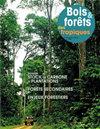控制马来西亚八大油棕种植公司的决策
IF 0.6
4区 农林科学
Q3 FORESTRY
引用次数: 0
摘要
从殖民时代到现在,工业种植园的发展极大地塑造了东南亚农业和热带森林景观的马赛克。在这种背景下,关于森林砍伐和油棕可持续性的争议出现了。工业种植园公司的土地用途发生了重大变化,这些公司将其业务多样化,从汽车到银行和电信,成为企业巨头。今天提出的遏制油棕种植园砍伐森林的解决方案包括行业市场工具,如贸易禁令、法规或认证计划,这些工具应该影响私营公司的经济决策。然而,油棕企业是如此的多元化,并深深植根于国民经济,许多其他因素可能会影响他们的企业决策。波特和拉波尔塔以来的研究表明,公司股东的金融网络结构可能比市场本身对公司决策的影响更大,换句话说,公司所有权的性质(政府与私营部门)是公司决策的基本驱动因素。本文探讨了这些结构性驱动因素如何在大型油棕企业中发挥作用。利用网络分析,我们量化和分析了马来西亚主要油棕公司的股权。我们收集了10个不同级别的4331股股票的数据。该研究描述了财务拓扑结构,并将其与公司所有权的性质和可衡量的决策过程(如结构控制和决策负荷)进行了比较。我们发现决策不受所有权性质的影响,但很大程度上受公司财务结构的影响。我们还发现,决策负荷和结构控制似乎预测了这些公司内在的结构灵活性。这些发现的含义可能有助于重新思考森林砍伐的政治治理,并开辟一个新的研究领域,涉及描述和分析支配公司行为的深层金融结构。首先,了解影响种植园公司的金融力量对油棕和森林的可持续性至关重要。其次,我们现在可以确定并优先考虑最具弹性的公司,以发展长期可持续的做法。本文章由计算机程序翻译,如有差异,请以英文原文为准。
Control over decision-making in eight major oil palm plantation companies in Malaysia
Southeast Asia's mosaics of agricultural and tropical forest landscapes have been significantly shaped by the advance of industrial plantations from colonial times to the present. Controversies over deforestation and oil palm sustainability have emerged in this context. Significant land use changes have been made by industrial plantation companies, which have diversified their activities to sectors ranging from automobiles to banking and telecoms to become corporate giants.
The solutions proposed today to curb deforestation for oil palm plantations consist of sectoral market tools such as trade bans, regulations or certification schemes that are supposed to influence the economic decisions of private companies. However, oil palm corporations are so diversified and deeply embedded in national economies that many other factors could influence their corporate decision-making. Studies since Porter and Laporta suggest that the structure of the financial network of company shareholders may have more influence on corporate decisions than the market itself, in other words that the nature of company ownership (government versus private sector) is the essential driver in corporate decision-making.
This thesis explores how these structural drivers play out in major oil palm corporations. Using network analysis, we quantified and analysed shareholdings in the main oil palm corporations in Malaysia. We gathered data on 4,331 shareholdings at ten different levels. The study describes the financial topologies and compares them with the nature of company ownership and with measurable decision-making processes, such as structural control and decision loads.
We found that decision-making was not influenced by the nature of ownership but was very much influenced by the financial structure of the corporations. We also found that decision loads and structural control seem to predict a structural flexibility which is intrinsic to these corporations.
The implications of these findings could help to rethink the political governance of deforestation and open up a new field of research concerned with describing and analysing the deep financial structures that govern the behaviour of corporations. Firstly, understanding the financial forces that shape plantation companies is critical to oil palm and forest sustainability. Secondly, we can now identify and prioritize the most resilient corporations with a view to developing sustainable practices for the long term.
求助全文
通过发布文献求助,成功后即可免费获取论文全文。
去求助
来源期刊

Bois et Forets Des Tropiques
FORESTRY-
CiteScore
1.50
自引率
16.70%
发文量
31
审稿时长
>12 weeks
期刊介绍:
In 1947, the former Tropical Forest Technical Centre (CTFT), now part of CIRAD, created the journal Bois et Forêts des Tropiques. Since then, it has disseminated knowledge and research results on forests in intertropical and Mediterranean regions to more than sixty countries. The articles, peer evaluated and reviewed, are short, synthetic and accessible to researchers, engineers, technicians, students and decision-makers. They present original, innovative research results, inventions or discoveries. The journal publishes in an international dimension. The topics covered are of general interest and are aimed at an informed international audience.
 求助内容:
求助内容: 应助结果提醒方式:
应助结果提醒方式:


